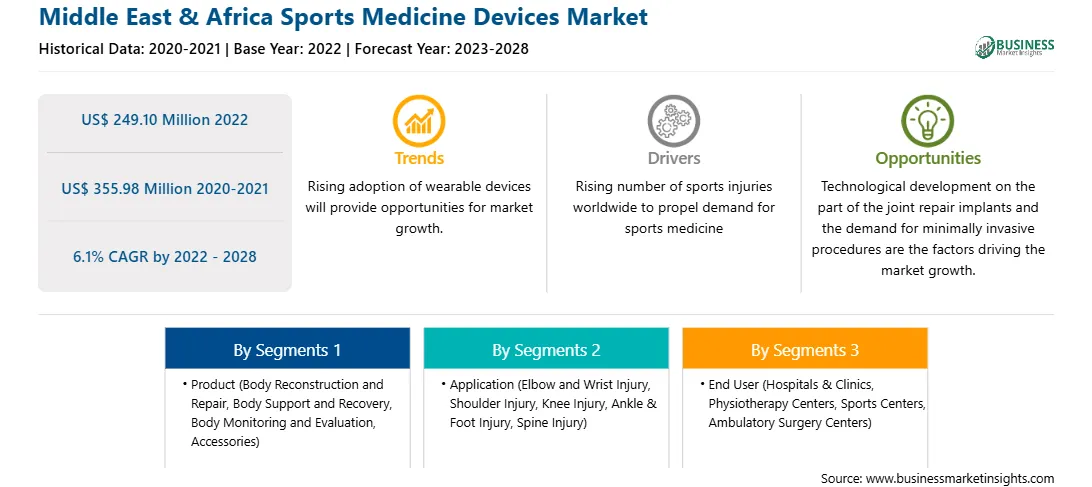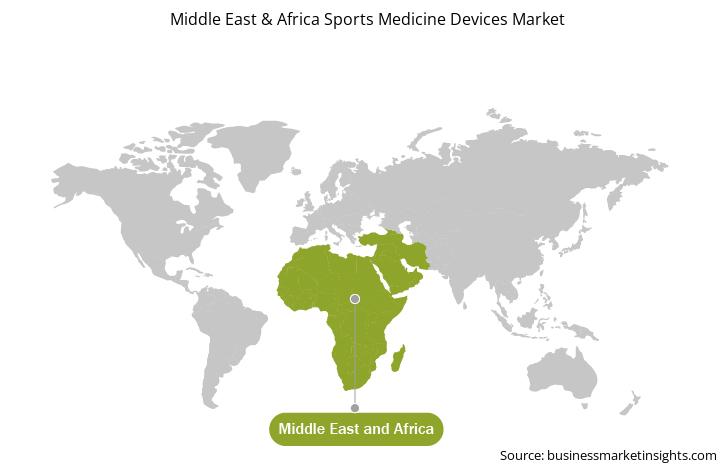Medical technologies, such as artificial intelligence (AI) and automation, play a key role in several aspects of an athlete's routine, from predicting and preventing sports-related injuries to monitoring fitness and enhancing recovery after a training session or competitive outing. These technologies help athletes in optimizing their performances and maintaining fitness, ultimately allowing them to extend their careers. Further, new technologies and applications are also showing the potential to provide athletes and their coaches with valuable biometric data, including heart rate, metabolism, workload, and core temperature, which, in turn, can be used to detect fatigue and predict the likelihood of future injury.
Implants manufactured through 3D printing are expected to have a significant impact on orthopedics in the coming years. 3D printing facilitates a rapid and low-cost (compared to commercially available implants) method of producing customized implants based on patients’ requirements, which exhibit lower toxicity and higher patient acceptance. Prosthetic limbs are evolved to incorporate advanced materials, such as plastics and carbon fiber composites. Further, technological advances and novel innovations, such as bionics, sensors, artificial intelligence, and micro-mechatronics, have been achieved in prosthetics. Additionally, the increasing use of wearable devices such as resistance bands and other sensory aids to monitor stress levels and prevent fatigue-related injuries among athletes is fueling the growth of the sports medicine devices market. For example, Athletigen Technology, Inc., a performance-driven company in Nova Scotia, works with various athletes to use their genetic information to improve their performance and health while lowering the incidence of sports-related injuries.
Vendors in the Middle East & Africa sports medicine devices market are offering products with the new features and technologies to attract new customers and expand their footprints in emerging markets. This factor is likely to drive the market at a good CAGR during the forecast period.
Middle East & Africa sports medicine devices market is segmented into product, application, end user, and country. Based on product, the sports medicine devices market is segmented into body reconstruction and repair, body support and recovery, body monitoring and evaluation, and accessories. In 2022, the body reconstruction and repair segment is likely to hold the largest market share. Based on application, the Middle East & Africa sports medicine devices market is segmented into elbow and wrist injury, shoulder injury, knee injury, ankle and foot injury, spine injury, and others. The knee injury segment is likely to hold the largest share of the market in 2022. In terms of end user, the Middle East & Africa sports medicine devices market is segmented into hospitals and clinics, physiotherapy centers, sport centers, and ambulatory surgery centers. The hospitals & clinics segment is likely to hold the largest market share in 2022. Based on country, the Middle East & Africa sports medicine devices market is segmented into Saudi Arabia, South Africa, UAE, and the Rest of Middle East & Africa. Saudi Arabia held the largest market share in 2022.
Arthrex Inc.; Breg Inc.; Conmed Corporation; DePuy Synthes; DJO Middle East & Africa Inc.; Karl Storz SE & Co., KG.; Medtronic; Smith & Nephew; Stryker; and Zimmer Biomet are among the leading companies in the Middle East & Africa sports medicine devices market.
Strategic insights for the Middle East & Africa Sports Medicine Devices provides data-driven analysis of the industry landscape, including current trends, key players, and regional nuances. These insights offer actionable recommendations, enabling readers to differentiate themselves from competitors by identifying untapped segments or developing unique value propositions. Leveraging data analytics, these insights help industry players anticipate the market shifts, whether investors, manufacturers, or other stakeholders. A future-oriented perspective is essential, helping stakeholders anticipate market shifts and position themselves for long-term success in this dynamic region. Ultimately, effective strategic insights empower readers to make informed decisions that drive profitability and achieve their business objectives within the market.

| Report Attribute | Details |
|---|---|
| Market size in 2022 | US$ 249.10 Million |
| Market Size by 2028 | US$ 355.98 Million |
| Global CAGR (2022 - 2028) | 6.1% |
| Historical Data | 2020-2021 |
| Forecast period | 2023-2028 |
| Segments Covered |
By Product
|
| Regions and Countries Covered | Middle East and Africa
|
| Market leaders and key company profiles |
The geographic scope of the Middle East & Africa Sports Medicine Devices refers to the specific areas in which a business operates and competes. Understanding local distinctions, such as diverse consumer preferences (e.g., demand for specific plug types or battery backup durations), varying economic conditions, and regulatory environments, is crucial for tailoring strategies to specific markets. Businesses can expand their reach by identifying underserved areas or adapting their offerings to meet local demands. A clear market focus allows for more effective resource allocation, targeted marketing campaigns, and better positioning against local competitors, ultimately driving growth in those targeted areas.

The Middle East & Africa Sports Medicine Devices Market is valued at US$ 249.10 Million in 2022, it is projected to reach US$ 355.98 Million by 2028.
As per our report Middle East & Africa Sports Medicine Devices Market, the market size is valued at US$ 249.10 Million in 2022, projecting it to reach US$ 355.98 Million by 2028. This translates to a CAGR of approximately 6.1% during the forecast period.
The Middle East & Africa Sports Medicine Devices Market report typically cover these key segments-
The historic period, base year, and forecast period can vary slightly depending on the specific market research report. However, for the Middle East & Africa Sports Medicine Devices Market report:
The Middle East & Africa Sports Medicine Devices Market is populated by several key players, each contributing to its growth and innovation. Some of the major players include:
The Middle East & Africa Sports Medicine Devices Market report is valuable for diverse stakeholders, including:
Essentially, anyone involved in or considering involvement in the Middle East & Africa Sports Medicine Devices Market value chain can benefit from the information contained in a comprehensive market report.